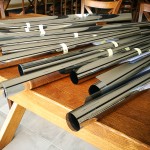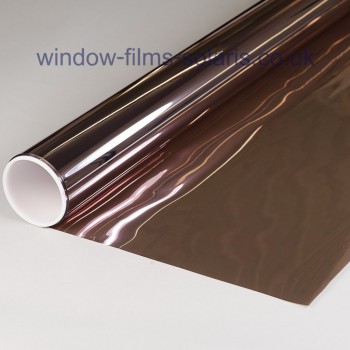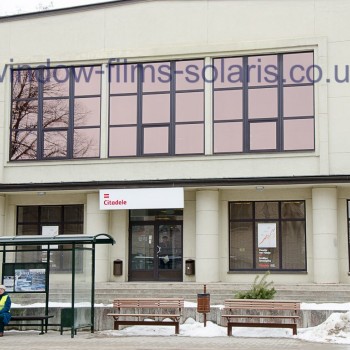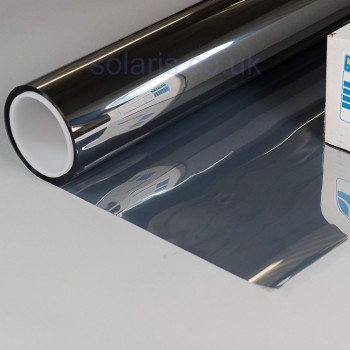One Way Window Films


How One-Way Window Films Work
The operation of one-way glass film capitalises on the properties of reflective materials that bounce back a significant portion of the sunlight hitting them. Due to this phenomenon, the external side of the covering reflects bright light, rendering it almost opaque from the outside. However, the inner side is less reflective, ensuring good visibility of the exterior. If the one-sided effect is not to your taste, more products can be explored in the privacy window tints section of our website.

Advantages of One-Way Visibility Window Tints:
What makes this type of glass tinting popular among UK residents? It is the desire and ability to make windows externally opaque and alter their properties. A straightforward and effective solution for protection from prying eyes. The main merits of one sided glass films include a broad range of applications and versatility in addressing various challenges.
- Privacy: One-way vision window films are ideal for windows in densely populated urban areas.
- Sunlight Heat Reflection: Reduces the interior heat from sunlight.
- Sunlight Reduction: Minimises intense sunlight and reduces glare.
- UV Ray Defence: Shields from damaging ultraviolet radiation.
- Simple Set-Up: Effortless tint application procedure.
- Long-Lasting: Over 9 years of lifespan (for interior-applied one-way window films).
- Minimal Upkeep: One-way window films demand little maintenance.

Limitations of One-Way Glass Films
In the realm of window treatments, one-way glass films exhibit certain intrinsic limitations:
- Foremost, it is essential to understand that one-way glass films inherently darken the glass to which they are applied.
- The directionality or effect of privacy offered by these coverings is contingent on the intensity and orientation of ambient light. During daylight hours, the film appears mirror-like from the outside whilst maintaining internal transparency. Conversely, during nighttime when the interior is more illuminated than the exterior, the effect is inverted.
Optimal Film Selection:
One-way glass film varies in both colour and degree of tinting. A crucial metric in this context is the Visible Light Transmission percentage (VLT%). This specification should be distinctly mentioned in the technical data. Ignorance of this metric elevates the risk of procuring an excessively dark or overly translucent covering.
Typically, consumers gravitate towards a standard window tinting with a 20% light transmission rate. Less frequently, they opt for a lighter 35% VLT or a deeply tinted 10% VLT. We offer one-way glass film for delivery to any location within the UK.

Internal Application Coverings:
- Omg 20%: A silver one-sided glass film with 20% light transmission.
- Omg 35%: A lighter, semi-reflective tinting.
- Omg 10%: The darkest and most reflective variant.
External Application Coverings:
- Omega 20 Ex: An external one-way film tailor-made for domestic windows.
- Omega 30 Ex: External tinting with a hint of reflectivity.
- Bronz at 20 Ex: An externally applied film sporting a reflective bronze finish.
- Bronz at 35 Ex: Bronze-toned external tinting offering semi-reflectivity.
To glean further insights into the characteristics and properties of one-way mirror window films and similar products, further exploration is encouraged.























